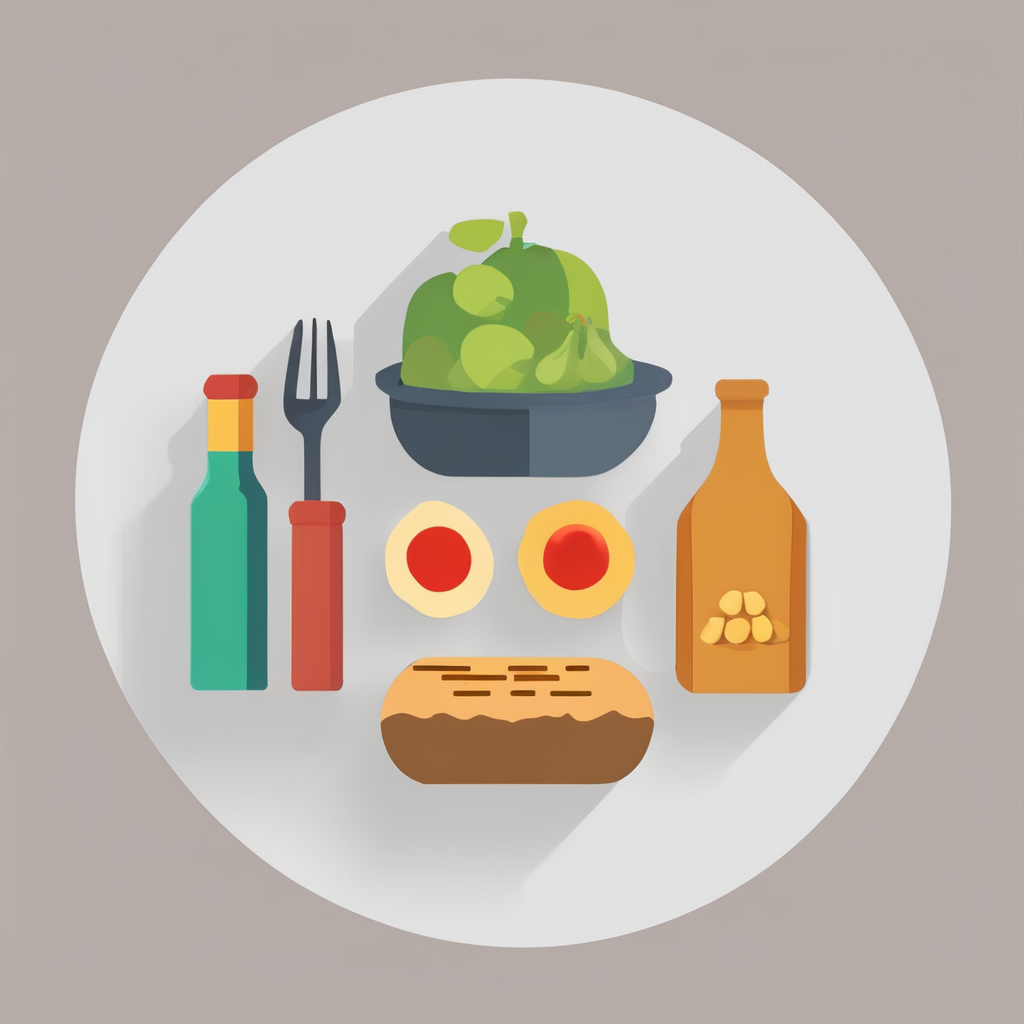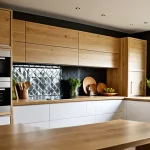Immediate Ways to Incorporate UK Restaurant and Bar Trends in Your Home Kitchen
When bringing UK restaurant trends into your home kitchen inspiration, the focus is on blending style with functionality. A crucial element is using modern kitchen design features like industrial lighting fixtures, open shelving, and sleek countertops. These elements create a professional, clean look that mirrors popular UK eateries.
Adopting darker color palettes—think matte black or deep greens—can instantly lend a sophisticated, contemporary vibe. Pair these with natural textures such as wooden accents or stone surfaces, commonly found in UK bar interiors, for warmth and contrast.
Have you seen this : How are UK bars incorporating local ingredients into their cocktails?
To enhance functionality, incorporate clever storage solutions inspired by busy restaurant kitchens, like magnetic strips for knives or hanging pot racks. These improve workflow while adding an authentic touch.
Practical updates include swapping out dated cabinet handles for minimalist, metallic ones and installing glass-front cabinets to showcase stylish glassware or dishware, echoing the openness of bar displays.
In the same genre : What are the latest technology advancements in UK kitchen restaurant bars?
By focusing on these adaptable trends, you can create a stylish and functional space that feels current and personalized. These changes not only refresh your home kitchen inspiration but connect your environment with the evolving vibes of UK dining scenes.
Trending Color Schemes and Materials from UK Restaurants
Exploring kitchen colour trends in UK restaurants reveals a strong preference for earthy tones and muted shades blended with bold accents. Popular restaurant colour palettes often feature deep greens, warm terracotta, and soft greys combined with black or navy blue highlights, creating spaces that feel both modern and inviting. These palettes balance vibrancy with sophistication, ideal for inspiring your own kitchen design.
Beyond colour, the choice of kitchen materials plays a key role. Terrazzo is making a notable comeback, admired for its speckled, colorful surface that adds visual texture without overwhelming simplicity. Brass fixtures bring warmth and luxury, contrasting beautifully with matte wood finishes that imbue a natural, organic feel. Marble remains a classic option for countertops but now pairs with these trend materials in more subtle, understated ways to avoid feeling too traditional.
When sourcing these colours and materials, consider starting with sample tiles or paint swatches in small kitchen areas to test how they interact with your lighting. Combining tactile textures like wood grain with cool, polished surfaces can create dynamic interplay and elevate even a modest space. Emulating UK restaurant style involves mixing bold colour statements with practical, durable materials for a kitchen both stylish and functional.
Lighting Ideas to Replicate Restaurant Ambiance
Creating the perfect home kitchen ambiance starts with understanding how restaurant lighting ideas work. Statement lighting fixtures play a pivotal role in restaurant design by drawing the eye and setting a refined tone. Incorporating pendant lights or chandelier-inspired fixtures above kitchen islands can replicate these eye-catching features, instantly elevating your kitchen’s look.
For a more immersive experience, layering your kitchen lighting is crucial. Use a combination of task lights, such as under-cabinet LEDs, and softer ambient sources, like dimmable ceiling lights, to mimic the nuanced kitchen lighting trends found in upscale eateries. This approach allows you to control the mood and functionality, much like a restaurant adjusts its atmosphere between day and night service.
Budget-friendly lighting updates can channel the vibe of high-end bars without breaking the bank. Swapping out basic bulbs for warm-toned LEDs or adding dimmer switches can transform your kitchen space effortlessly. Even simple glass pendant lights can introduce a touch of sophistication, showcasing how smart lighting choices impact your home kitchen ambiance with style and practicality.
Layout and Spatial Trends for a Social Kitchen
Creating an open-plan kitchen is at the forefront of current design preferences, merging cooking and socialising seamlessly. This kitchen style removes barriers, allowing everyone to engage in conversations, which makes it ideal for modern family living and entertaining guests simultaneously.
A popular element in social kitchen layout is the kitchen island UK—a versatile fixture serving as a preparation area, dining spot, and informal gathering hub. Islands often include seating around one side, enhancing their role as social anchors. Combining these with banquettes or breakfast bars creates designated nooks for relaxed dining or casual chats, enriching the kitchen’s communal appeal.
Maximising space in open-plan kitchens while maintaining style requires clever planning. Integrating storage within islands and seating units streamlines clutter, preserving an airy feel. Additionally, aligning furniture and appliances to encourage flow between cooking and seating zones keeps the kitchen functional yet inviting.
By translating restaurant and bar layout principles—like communal tables and accessible service areas—into home kitchens, one achieves a social kitchen layout that’s both practical and on-trend. This design approach supports both lively gatherings and everyday family routines with ease.
Case Studies: Real-Life Kitchen Transformations Inspired by UK Dining Spots
Inspired by the charm and innovation of UK dining spots, several kitchen transformations have embraced elements that blend style with functionality. Homeowners often draw from restaurant interiors, integrating kitchen transformation strategies that mirror the warmth, openness, and smart use of space seen in top eateries.
One popular approach includes adopting industrial design features, such as exposed brick walls and metal fixtures, giving kitchens a modern yet rustic vibe. These touches, paired with warm lighting and minimalistic cabinetry, create inviting spaces ideal for both cooking and socializing.
Designers emphasize the importance of balancing aesthetics and practicality, recommending layouts that prioritize workflow efficiency while allowing room for creativity. For example, incorporating large kitchen islands inspired by chef’s prep areas not only enhances utility but also encourages family and friends to gather.
Homeowners note that researching UK restaurant designs sparked fresh ideas, especially around bold colour schemes and textural contrasts. Such inspiration is vital in personalizing kitchens, making them feel both unique and welcoming.
Through these kitchen case studies, clear lessons emerge: thoughtful design, attention to detail, and a willingness to experiment with style are key to successful interior design inspiration from the UK’s vibrant dining scene.
Budget-Friendly Ways to Channel Restaurant Style at Home
Discovering affordable kitchen updates that evoke a sleek, restaurant vibe is easier than expected. Simple, cost-effective swaps like a fresh coat of paint on cabinets or walls can dramatically alter the kitchen’s atmosphere. Switching out old hardware for stylish knobs and handles in brushed metal or matte black adds instant sophistication without a hefty price tag.
Replacing pricey countertop materials with durable, budget-friendly alternatives—such as laminate designed to mimic stone—creates a high-end look at a fraction of the cost. Introducing subtle decor elements, like minimalist wall art or functional plants, channels the calm, curated aura typical of upscale eateries.
For those embracing a budget kitchen design, sourcing second-hand materials or repurposing existing items works wonders. Salvaging reclaimed wood or polished tiles can mimic the character of gourmet restaurant surfaces without the steep investment.
To equip your kitchen with essential accessories, exploring kitchen accessories UK vendors that specialize in affordable, stylish tools and utensils will ensure you stay on budget while enhancing functionality and style. These approaches combine practicality with aesthetics, proving a restaurant-inspired kitchen doesn’t require overspending.
Understanding Robot Hoovers: How They Work
Robot hoovers are smart cleaning devices that use a combination of sensors, motors, and software algorithms to navigate and clean floors independently. At their core, these devices rely on mapping technology—using lidar, cameras, or infrared sensors—to explore and create a detailed map of your home. This allows them to plan efficient cleaning paths, avoiding obstacles like furniture or pets while covering every area.
When it comes to suction and cleaning efficiency, robot hoovers operate with powerful brushes and vacuum mechanisms designed specifically for different floor types. Some models automatically adjust their suction power depending on whether they are on carpet or hard flooring, optimizing both battery life and cleaning performance.
The navigation system often includes drop sensors to prevent falls from stairs, and cliff sensors to steer clear of ledges. Advanced models also incorporate artificial intelligence, learning your cleaning preferences over time and enabling features like scheduled cleaning or virtual no-go zones.
By understanding this technology, users gain confidence in the robot hoover’s ability to maintain a clean home with minimal manual input, providing effortless, thorough cleaning tailored to individual needs.

